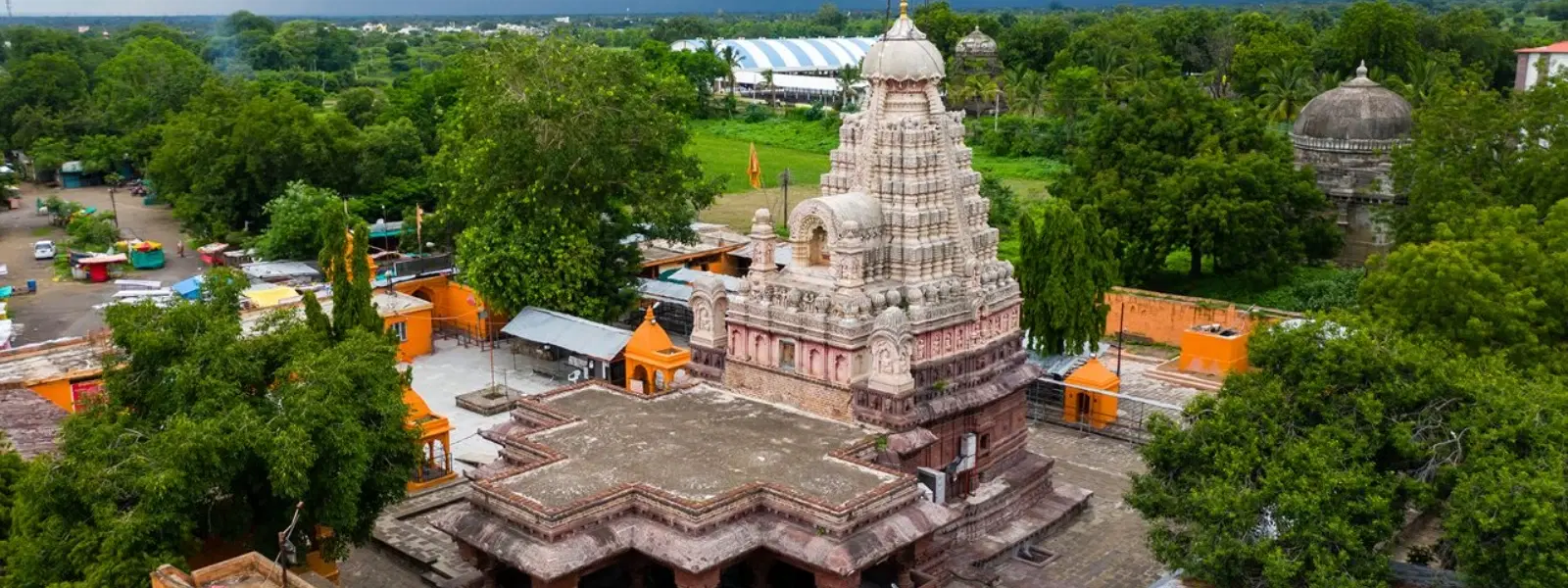
Hotels
•05 min read

Grishneshwar Temple, as one of the 12 Jyotirlingas, stands as a beacon of spiritual energy for devotees around the world. Timing your visit not only ensures comfort but also deepens the overall spiritual experience. In this guide, we explore the best months to visit Grishneshwar Temple with insights on weather, temple timings, and crowd levels, empowering you to plan your pilgrimage with confidence. Read on to uncover the ideal months to craft the perfect spiritual journey.
The temple is more than just a place of worship—it is a living symbol of devotion and history. Devotees often describe the experience as transformative, where every visit resonates with age-old rituals and a palpable sense of divinity. The atmosphere, enriched with chants and religious fervor, varies subtly with the season, making each visit unique.
When planning your trip, several factors come into play. The local weather near Grishneshwar Temple can influence not only your comfort but also the temple experience. Additionally, understanding temple timings, aarti schedules, and crowd levels can help you avoid peak hours and long waits. Season-specific travel disruptions also play a role, making it essential to consider the overall ambiance before finalizing your travel dates.
Winter is the most sought-after season for visitors. Post-monsoon, the air turns crisp and comfortable, offering the ideal atmosphere for long hours of devotion. The cooler weather minimizes physical strain, and the temple surroundings transform into a pristine landscape, providing a serene setting that truly complements the spiritual rituals performed here.
Visiting during the monsoon months introduces devotees to a different facet of the temple’s charm. Though there may be fewer tourists, the heavy rains generate a lush, green environment that enhances the natural beauty of the area. However, enthusiasts should be mindful of potential travel delays caused by unpredictable weather conditions.
Certain months are highlighted by festivals or special religious events, inviting devotees to experience the temple in its most vibrant form. These occasions, marked by elaborate rituals and a surge of spiritual energy, offer a unique ambiance that can be both uplifting and unforgettable.
October signals the beginning of the peak season. As the monsoon recedes, the surroundings come to life with fresh greens and a renewed vibrancy. The comfortable weather and reduced humidity make it an excellent month for both sightseeing and deep spiritual engagement.

In November and December, the moderate winter chill adds a refreshing touch to the spiritual experience. With temple crowds thinning out compared to other times of the year, pilgrims can enjoy a peaceful atmosphere. The cool air and clear skies create an ideal environment for reflective moments and prolonged temple visits, enhancing the overall sense of devotion.
As winter begins to wane, January and February offer a calm and introspective journey. The weather remains crisp, and the temple rituals are conducted with a serene rhythm that resonates with the tranquility of the season. Pilgrims find these months perfect for uninterrupted darshan and meditation, allowing for a more personal encounter with divinity.
July and August transform the landscape with the monsoon rains, offering a distinctive experience. The temple's surroundings are drenched in vibrant hues, and the natural calm fosters an ambiance of spiritual introspection. While travel may require extra caution, the solitude and magical aura of the rainy season are cherished by many devotees who seek a break from the busy ritualistic seasons.
The temple opens its doors around 5:30 AM and closes by 9:30 PM, with special timings designated for aarti and darshan rituals. It is advisable to check the timings in advance to synchronize your visit with the most auspicious hours of prayer.
There is a range of hotels and guesthouses near Grishneshwar Temple designed to cater to every type of traveler. Whether you prefer a simple stay or a more luxurious experience, visitors can find an assortment of options that meet their expectations in comfort and affordability. These nearby hotels ensure that you have a restful retreat after a day filled with spiritual activities.
The location, nestled close to Aurangabad in Maharashtra, is well-connected by various modes of transportation. Devotees traveling by air, train, or road will find it convenient to reach the temple. Whether you opt for the rapid transit of a flight or the scenic drive, planning your journey around the objective of comfort and reliability enhances the pilgrimage experience.
A quick overview of the weather conditions helps in preparation. Winter months promise cool, comfortable temperatures perfect for outdoor activities, while the monsoon season gifts visitors with a lush and green backdrop, albeit with occasional rain showers. Understanding these subtle variations allows you to pack appropriately and manage your itinerary efficiently.
Did You Know? The Best Time to Seek Spiritual Bliss
Devotees often recommend visiting Grishneshwar Temple during the winter months, as the serene ambiance and pleasant weather create the perfect setting for spiritual reflection and devotion.

While the spiritual magnetism of the temple is undoubtedly the highlight, the region boasts several other landmarks waiting to be explored. The ancient Ellora Caves, with their intricate carvings and historic significance, provide a fascinating glimpse into India's cultural heritage. Similarly, spots like Daulatabad Fort add an extra dimension to your journey, making the visit both spiritually and historically enriching.
Respecting local traditions is essential. Visitors are encouraged to dress modestly to honor the sanctity of the temple. Men might be required to remove their shirts before entering the sanctum, a practice that underscores the reverence expected at this holy site. Maintaining a demeanor of respect and quiet reflection is equally important, ensuring that your visit is both fulfilling and harmonious.
Plan your visit during off-peak hours to avoid large crowds and enjoy a more intimate experience. Carry essentials like an umbrella during the monsoon months and layer your clothing in winter. A well-planned itinerary that incorporates rest breaks and flexible timings can significantly enhance your overall experience at Grishneshwar Temple.
Visitors are expected to dress modestly, with men often required to remove their shirts before entering the sanctum.
The temple is located near Aurangabad in Maharashtra, which is well-connected by road, rail, and air.
Grishneshwar is the 12th and final Jyotirlinga, making it a significant pilgrimage site for devotees of Lord Shiva.
Many devotees believe in the divine blessings and spiritual experiences associated with visiting the temple, particularly during auspicious occasions.
The temple typically opens around 5:30 AM and closes by 9:30 PM, with specific timings for aarti and darshan.
In summary, aligning your visit to Grishneshwar Temple with the seasons and festivals can transform your spiritual journey into a profoundly enriching experience. Whether you choose the refreshing calm of winter in October through February or the mystical allure of the monsoon in July and August, every month offers its own unique blessings. With practical travel tips and insights into local attractions, planning your pilgrimage becomes an endeavor that nurtures both the soul and the mind.